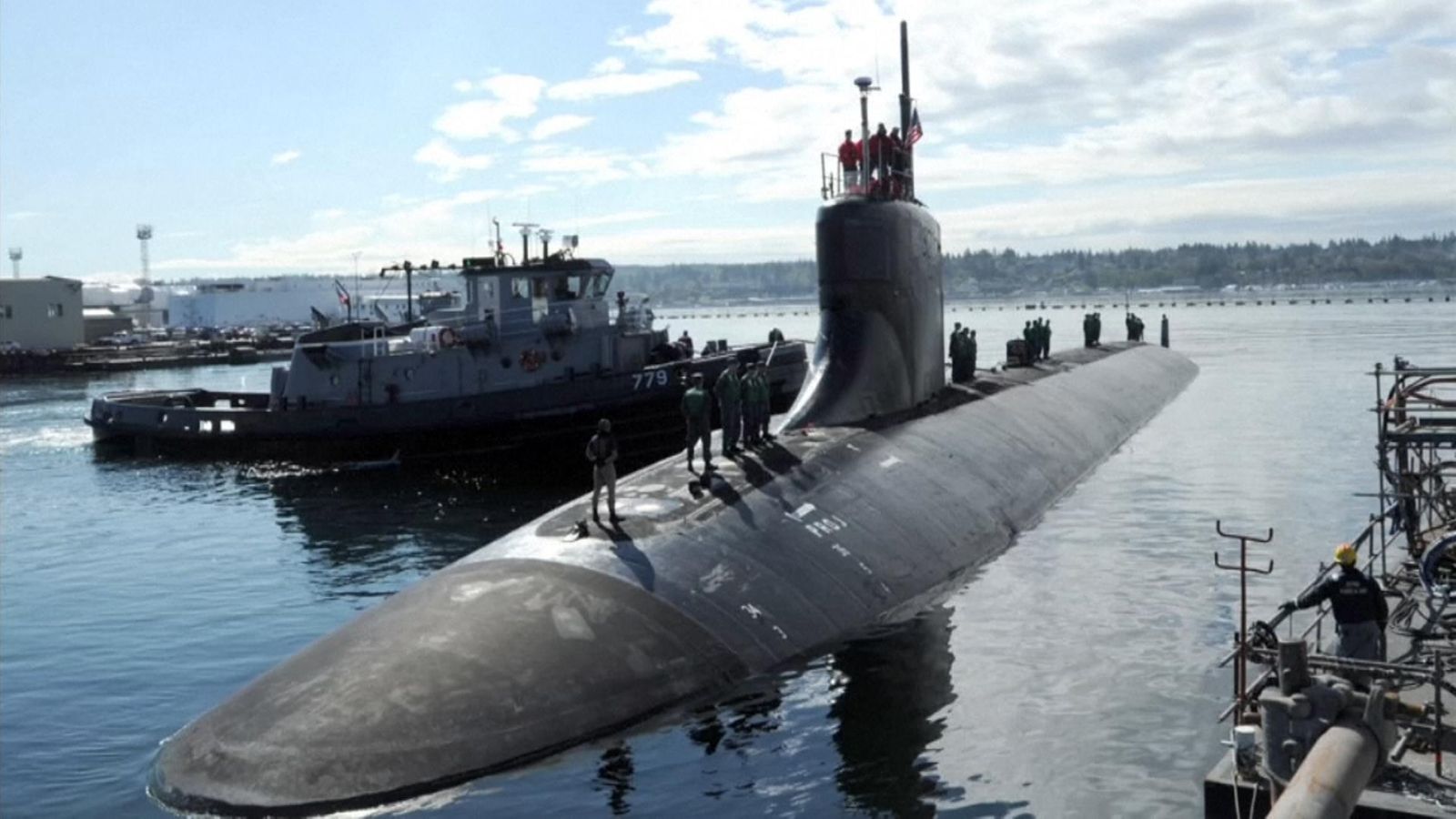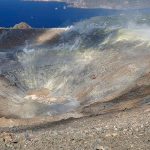US Navy investigators have identified the “unknown object” that collided with a submarine in the South China Sea in October – an uncharted underwater mountain.
The USS Connecticut was in a “safe and stable condition” after the incident in the disputed waters, which provoked outrage from officials in China.
But the risk of fallout following damage to the nuclear-powered submarine allegedly led to the US deploying a so-called “nuke sniffer” plane to identify any leakage – leakage which the US denied took place.
Please use Chrome browser for a more accessible video player
A US Navy spokesman said: “The investigation determined USS Connecticut grounded on an uncharted seamount while operating in international waters in the Indo-Pacific region.”
Chinese military experts cited by state-owned news outlet Global Times said that the US statement was disappointing and expressed concern about nuclear leakage.
Wang Wenbin, a spokesperson for the Chinese foreign affairs ministry, complained that the US statement was intentionally equivocating regarding the location of the incident – with potential leakage causing a risk to the countries in that area.
“The key is that the US military should stop sending warships and warplanes everywhere, showing its military muscles and violating other countries’ security. If not, this kind of accident will only take place more often,” he said, according to the Global Times.
COP26: US president lashes out at Russia and China over failure to attend COP26 climate summit
COP26: Boris Johnson warns all countries must ‘do more’ in fight to tackle global warming
Disneyland Shanghai shut down as thousands ‘locked in’ for mass coronavirus testing after one positive case
US Navy officials said two sailors had sustained moderate injuries and nine minor injuries, such as bruises and scrapes.
They said the sub headed towards port at Guam after the incident, and that it was not announced sooner in order to maintain operational security.
Follow the Daily podcast on Apple Podcasts, Google Podcasts, Spotify, Spreaker
On the day of the collision there was an unusual number of Chinese aircraft active in the region as tensions over the sovereignty of Taiwan continue to rise.
In an apparent shift in long-standing policy, Joe Biden recently said that the US would defend Taiwan if it was attacked by China.
The president said America had “a commitment” to go to the aid of the island, which has complained of mounting military and political pressure by Beijing, which stakes a territorial claim.
However, the White House later said there had been no change in stance.
Washington has long followed a policy of “strategic ambiguity” on whether it would intervene militarily to protect Taiwan in the event of a Chinese attack.
But asked at a town hall meeting if the US would get involved, Mr Biden said: “Yes, we have a commitment to do that.”
Back in August, an administration official was forced to insist that American policy on Taiwan had not changed after the president appeared to suggest the US would defend the island in the face of aggression.
Following Mr Biden’s latest comments, a spokesman said: “We will continue to support Taiwan’s self-defence, and we will continue to oppose any unilateral changes to the status quo.”






















